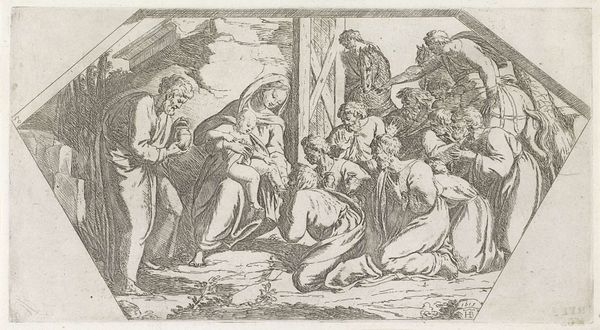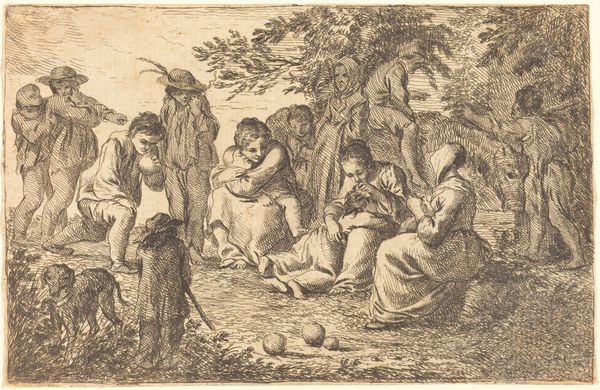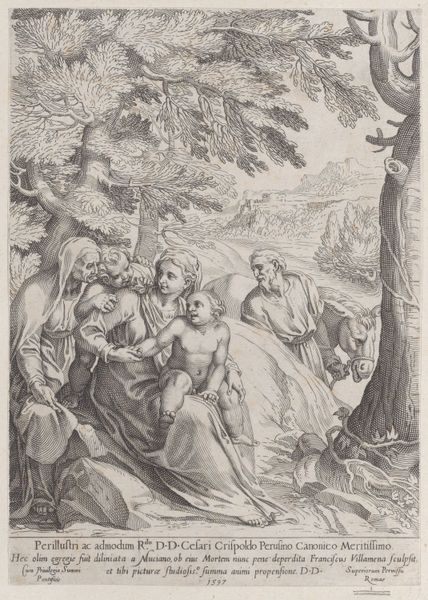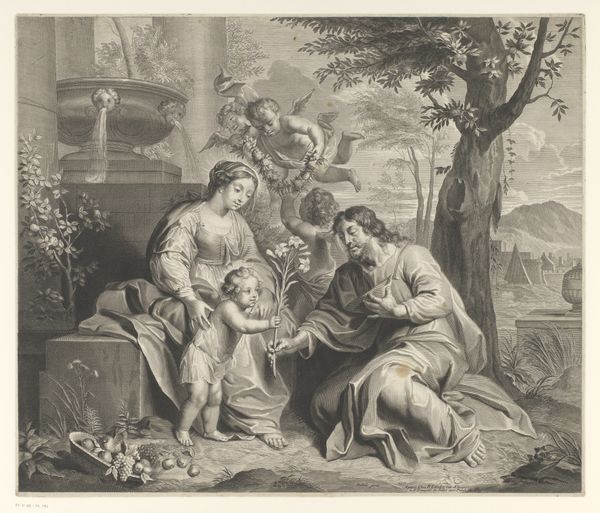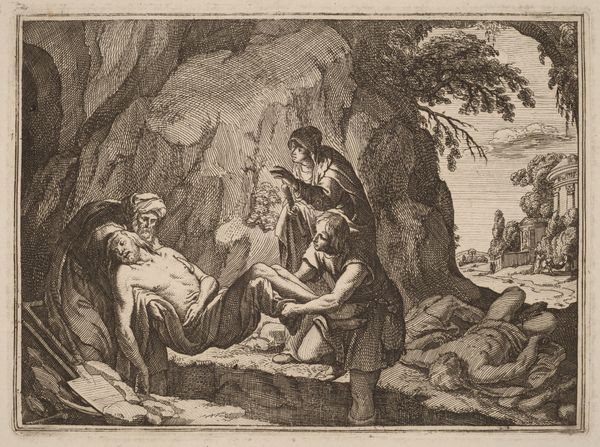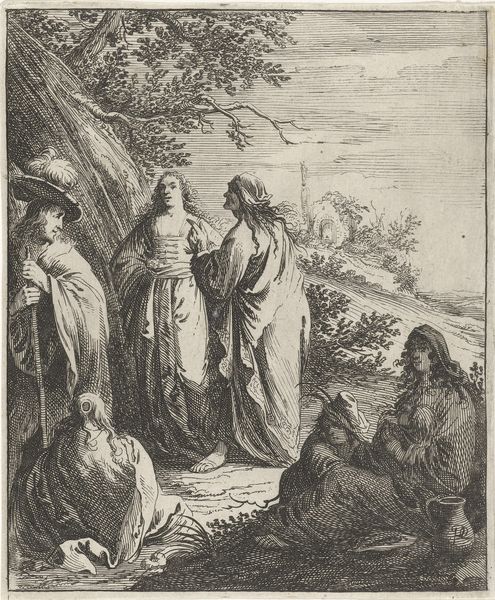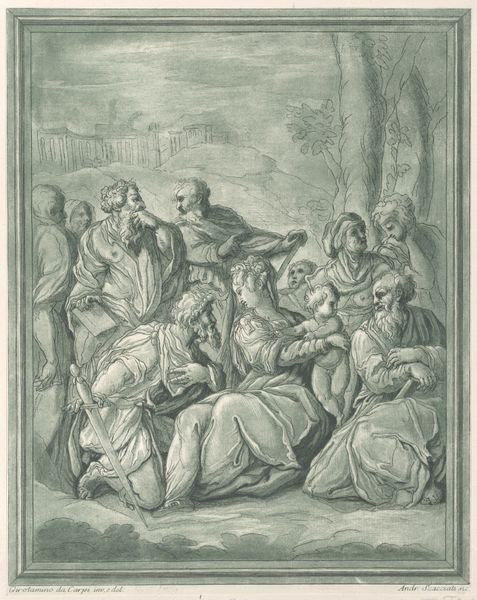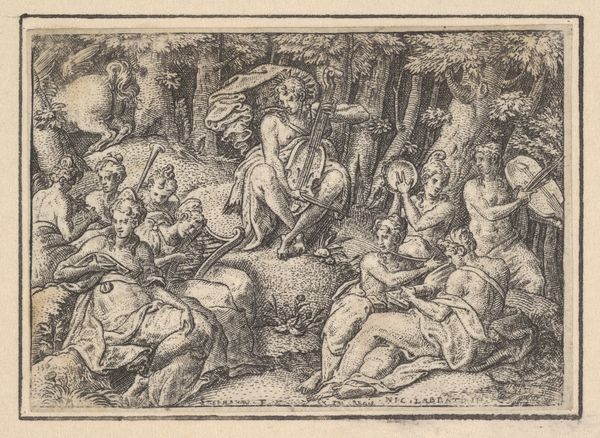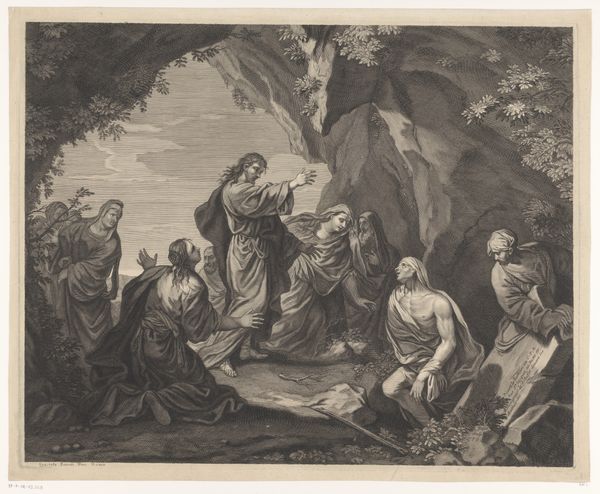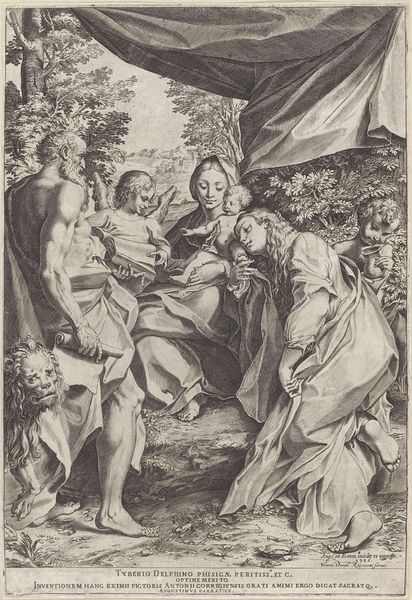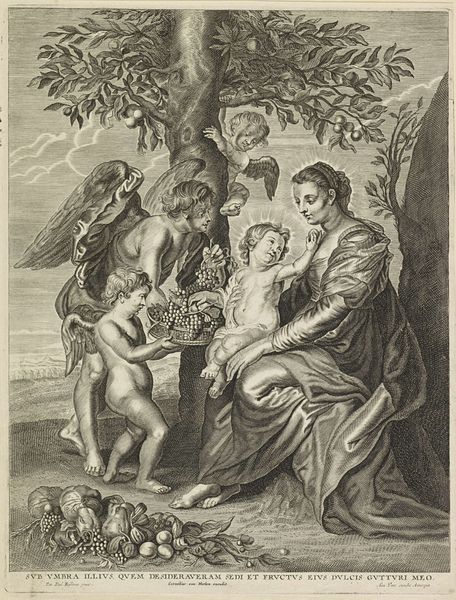
drawing, print, etching
#
drawing
#
baroque
# print
#
etching
#
figuration
#
history-painting
Dimensions: sheet: 8 5/8 x 11 9/16 in. (21.9 x 29.4 cm)
Copyright: Public Domain
Curator: Before us, we have a print entitled "The Holy Family attended by Angels," an etching executed sometime between 1600 and 1650. The piece is currently part of the Metropolitan Museum of Art's collection here in New York, and it's attributed to Pietro Testa. Editor: It's intensely quiet, almost hushed. I feel as though I am witnessing a moment of immense significance yet also tenderness. The etching is finely wrought, and you get this great sense of swirling light. There's a real emotional intensity to this extended family unit. Curator: You’ve picked up on something vital. Testa, though working within the Baroque style, brought a unique intellectual sensibility to his work. During that time, history painting took off, because the Church and powerful families had need of large frescoes that promoted moral lessons to the masses. But history was not necessarily factual, because truth was used to portray a moral teaching, too. Editor: That swirling, baroque dynamic seems like an embodiment of constant revelation, in ways that seem fitting for the topic and tone, because the message itself might evolve through encounters between this etching and people. But does this print have any symbolic intention, with the angels overhead and figure kneeling before a mother and child? Curator: It does indeed. Representations of the Holy Family were a central component of Catholic art during this period, particularly after the Council of Trent, which really sought to reaffirm traditional Catholic doctrine. The inclusion of angels emphasizes the divine nature of the scene, while the offering presented on a tray may refer to Christ's future sacrifice or simply celebrate Mary's purity. This becomes further reinforced through broad public access. Engravings are a multiple. Editor: Knowing that just unlocks deeper resonance, as my intuition found meaning in this moment! Looking closer, this is like witnessing not just devotion, but hope rendered through ink. Like something emerging from darkness—almost whispering promises into a world badly in need of light. Curator: Ultimately, that is the lasting impact of pieces such as this. They may be viewed privately, yet they remind us of core values in Western history and cultural expectations—as much then as now. Editor: I came away not just appreciating the artist’s hand, but the emotional architecture embedded into that hand as well! Thanks for that look back!
Comments
No comments
Be the first to comment and join the conversation on the ultimate creative platform.
